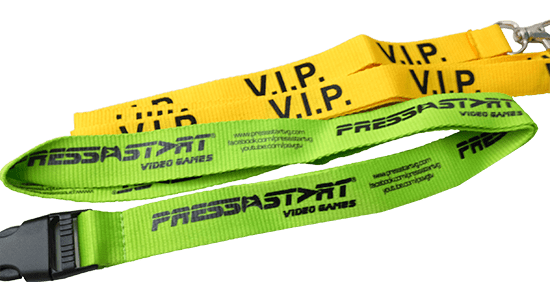
Lanyards were first utilized in the 1400s by military men and sailors to hold their weapons and various tools. Their simplicity and versatility made their mark on the world, and today, lanyards are used for different practical purposes such as promotional and marketing materials, electronics and gadget holders, safety accessories, and, of course, ID laces.
So how are these multi-functional items made? Let’s take a look at the basic steps of lanyard manufacturing.
Choosing the Type of Lanyard
Making lanyards begins with choosing the materials to work with. Wristband Creation offers four types of lanyards: nylon lanyards, tubular lanyards, polyester lanyards, and woven lanyards. They are made with either polyester or nylon, which are both lightweight, durable, easy-care synthetic fabrics that resist mold and mildew, as well as shrinking, stretching, and wrinkling. Using these materials will ensure that your lanyards will last for a long time.
Cutting the Fabric to Size
Once you’ve decided on the right type of lanyard for your needs, a large piece of fabric, dyed based on your preferred based color, is fed into a machine that cuts it to size depending on the specifications. The most common widths of lanyards are 5/8 inch, 3/4 inch, and 1 inch.
Tubular lanyards follow a slightly different process. Several polyester threads, depending on the desired width (Wristband Creation offers 3/8 inch and 5/8 inch widths for tubular lanyards), are “braided” by a machine. The fibers are woven loose enough so that when pulled, the lanyard will slightly stretch — a useful characteristic for carrying slightly heavier items like cell phones, small digital cameras, and tools like Swiss knives or flashlights.
Printing or Stitching the Design
The most common lanyard designs are company names and logos. And while you aren’t limited to these simple designs, it’s best not to put in too many elements or details to make the design easier to replicate and to prevent your lanyard from looking tacky. It’s also a good idea to use neat and solid fonts to make the text more readable, even at a distance. All these pointers are applicable to printable wristbands as well.
For tubular, polyester, and nylon lanyards, Wristband Creation prints the design using a high-quality silk screening process. With the use of the Pantone Matching System, we guarantee that your design will be produced exactly as you want it, down to the smallest color gradations. What’s more, we use only the highest quality of inks to ensure that it would adhere properly to the material and will not change in color while waiting for the ink to dry, and so the design won’t bleed onto other parts of the lanyard (since nylon and polyester are water-resistant fabrics).
Meanwhile, for woven lanyards, the design will be stitched using a process that’s similar to embroidering on t-shirts. This results in a slightly raised design and thus, a textured feel. Simple designs and fonts are the best for woven lanyards to prevent the distortion of the design.
Choosing and Affixing the Attachment
Apart from the base color and the actual design, you can also customize your lanyards with different attachments. Depending on the purpose that you want your lanyard to serve, you can include attachments like split rings, bulldog clips, metal and plastic swivel hooks, and other types of hooks. You can also choose to include a cell phone loop, a plastic buckle, a badge reel, a badge holder, or a breakaway clasp. You can also opt to have lanyards made without any attachments.
Lanyards are simple in concept, but definitely the opposite when it comes to design and usage. Their versatility will also make sure that lanyards will continue to relevant for years to come. Contact Wristband Creation and have your customized lanyards produced for a practical way to show some school spirit, brand love, and charity support.

